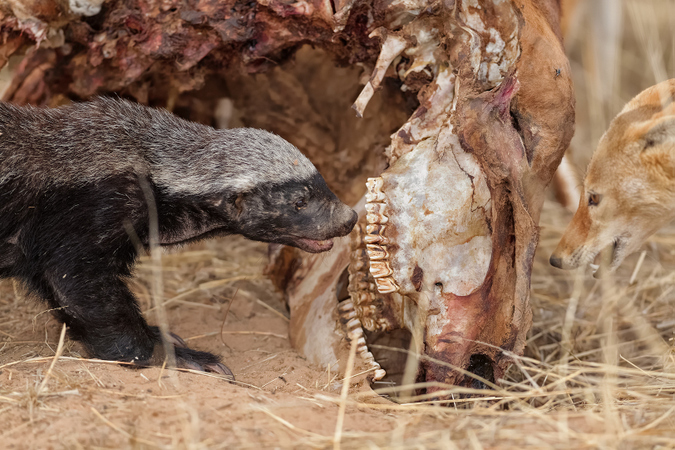
We’re just over halfway through our Photographer of the Year 2018 and every day we are receiving fantastic entries. Willem Kruger, a winner from our 2017 competition sent in a photo of a honey badger and black-backed jackals interacting over a giraffe carcass. He now shares with us this amazing wildlife encounter that he managed to capture on camera.
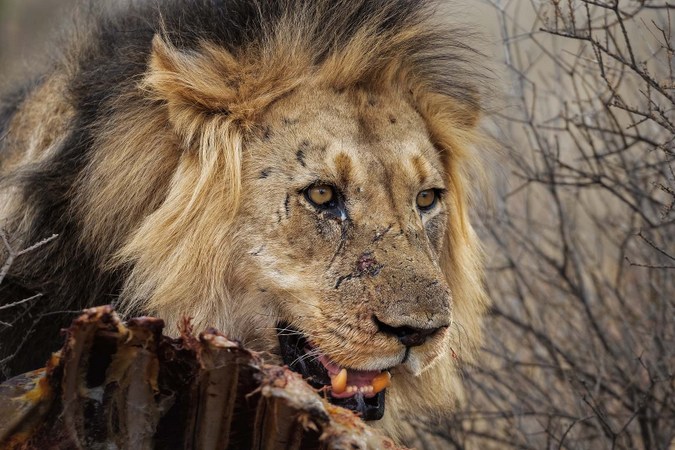
Written, and photographs, by Willem Kruger
On a trip to the Kgalagadi Transfrontier Park in November 2017, we came across an interesting interaction around a giraffe kill near the Kwang waterhole in the northeastern part of the park. A pride of lions had killed a giraffe next to the road about 300 metres north of the waterhole. When we first arrived at the sighting in the late afternoon a male lion was still feeding on the carcass on the grassy bank next to the road. The black-backed jackals kept a safe distance away from the carcass and the lion. We took a few photos and then left the sighting as we had to still reach Nossob rest camp before the gate closed for the day.

The next morning we drove north along the Nossob River back to the sighting. On arrival we saw that the lion had abandoned the carcass and the black-backed jackals had clearly made use of this opportunity – there were 15 of them around the kill! We parked our vehicle about 30 metres from them to capture the interaction amongst the jackals feeding on the carcass.
While watching the jackals, we heard movement in the grass bank next to our vehicle. To our surprise, a honey badger was moving through the grass very close to our vehicle.
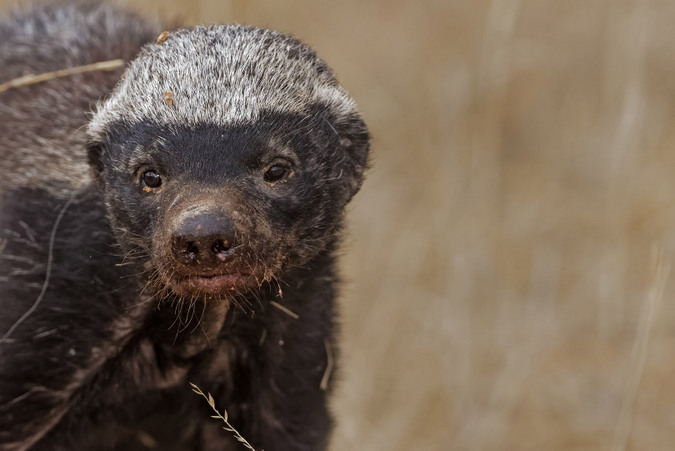
The honey badger passed right underneath our vehicle and approached the carcass. Some of the jackals were disturbed by the approaching badger, while others just kept on eating. The badger approached the carcass very cautiously, and surprisingly the jackals did not back away at all. He took his time to sniff around but did not try to eat anything.
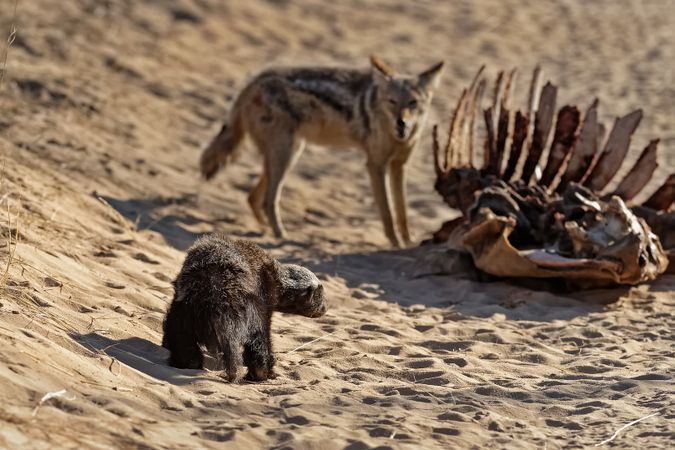
A few of the jackals followed the badger all around the carcass and this seemed to make him nervous. Eventually, the jackals persuaded the badger to leave the carcass without a fight and he made his way over the sandbank on the opposite side of the road.
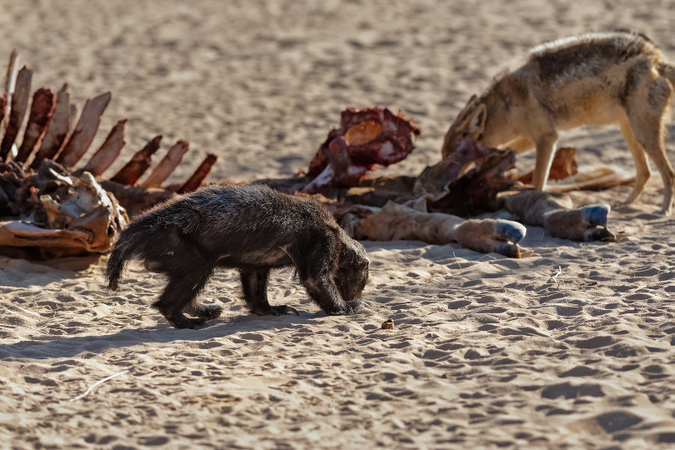
We thought the badger was not interested in carrion as we believed that they only eat freshly killed animals. We followed him as he made his way towards the Kwang waterhole, followed by a jackal or two.
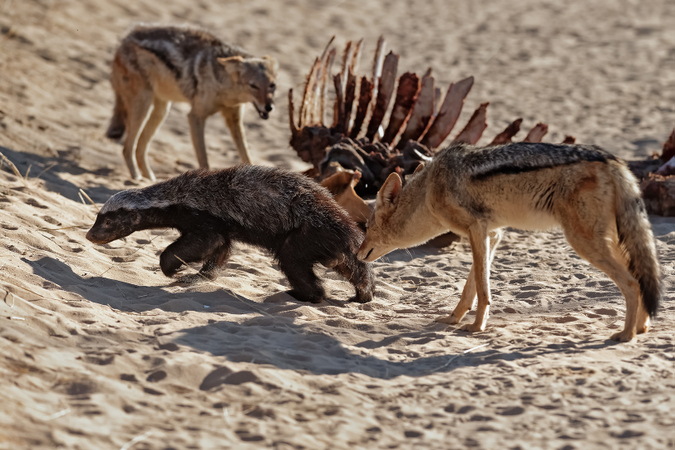
He reached the waterhole and started to drink in the early morning sunlight under the watchful eye of a nearby jackal.

After drinking, the badger crossed the road again but did not approach the carcass. He gave a quick glance in our direction – just enough time to get an interesting portrait photo and then he disappeared into the grass. We went back to the carcass and spent about an hour there photographing the jackals, tawny eagles and vultures that had descended.

For our afternoon game drive we decided to drive directly to the carcass again to see what had transpired since last we were there – we were hoping for more jackal and possible jackal-vulture interaction like we had that morning. On our arrival, we found that the carcass had been dragged off the road back up to the bank and there was just one jackal sniffing around.

We decided to move off and head north, however, on our way back to Nossob we once again passed the carcass and to our surprise found the same male honey badger now feeding on the carcass!
As is expected, the jackals were not impressed with the presence of the badger. Some of them tried to intimidate the badger but unlike that morning, the badger was unperturbed and even showed aggression towards those that bothered him.
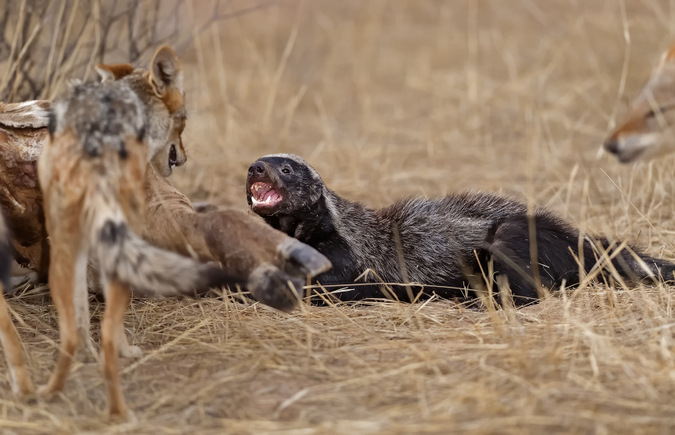
However, most of the jackals kept a safe distance from him. Every now and again one of the jackals would approach the badger from behind, smelling him and one even tried to bite him! The badger’s only reaction to this was to turn around and show his teeth. The jackals would then made hasty retreats to a safe distance.
The occasional jackal that did stand its ground was, however, not attacked by the badger – he just showed his own aggression and went back to looking for more meat on the carcass.
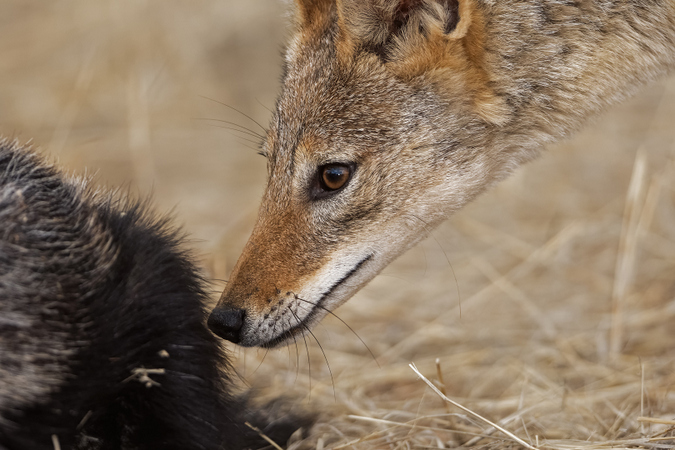
After about half-an-hour, the badger stood up and left the carcass without looking back. We tried to follow him but he disappeared amongst the grass and bushes. We stayed with the carcass for another 20 minutes but the badger did not return.
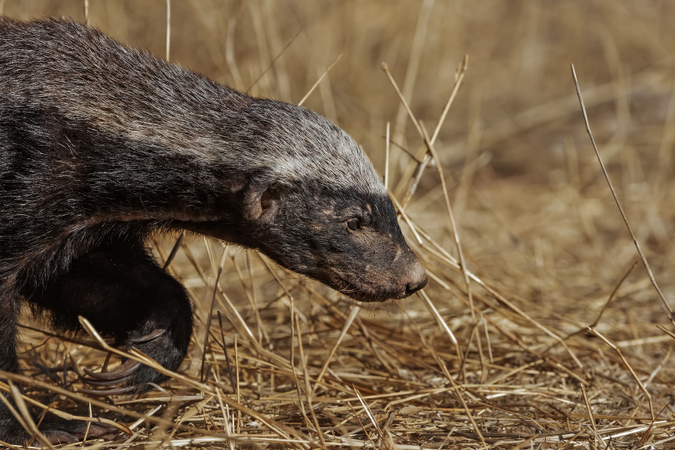
For us this was a very special sighting for the following reasons. Firstly, to see a honey badger feeding on a carcass killed by lions, and secondly, to find a giraffe (even though it was dead) so far north in the eastern part (Nossob River side) of the park.
We initially though the carcass was an eland because we have never seen giraffes in this area. However, the staff at Africa Geographic immediately identified the carcass as that of a giraffe. The giraffes in this park are usually found along the Auob River bed in the western side of the park from Mata Mata rest camp southwards towards the Gemsbokplein waterhole.

To comment on this story: Login (or sign up) to our app here - it's a troll-free safe place 🙂.![]()






